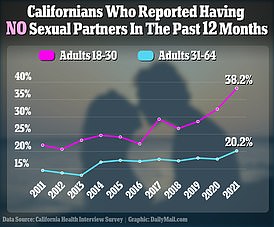Number of high school girls who use Plan B ‘morning after’ pills has DOUBLED in a decade, CDC data suggests
The number of teenagers using the 'morning after pill' has more than doubled in less than two decades, despite fewer teenagers being sexually active.
New data from the Centers for Disease Control and Prevention (CDC) shows that both male and female teens between the ages of 15 and 19 are having less sex, but they are turning more to emergency contraception to prevent unwanted pregnancies.
The number of teenagers who had used the morning-after pill in 2002 was eight percent. Between 2015 and 2019, that number rose to 22 percent.
But fewer teens are jumping into bed together: the percentage of women in this age group who report ever having had sex fell from 45.4 percent in 2002 to 40.5 percent between 2015 and 2019 – the last years surveyed.
The decline was greater among teenage men. In 2002, 46 percent reported having ever had sex, but between 2015 and 2019 that number dropped to 39 percent.
The above shows the rate of use of different types of contraception among female teenagers from 2002 to 2019
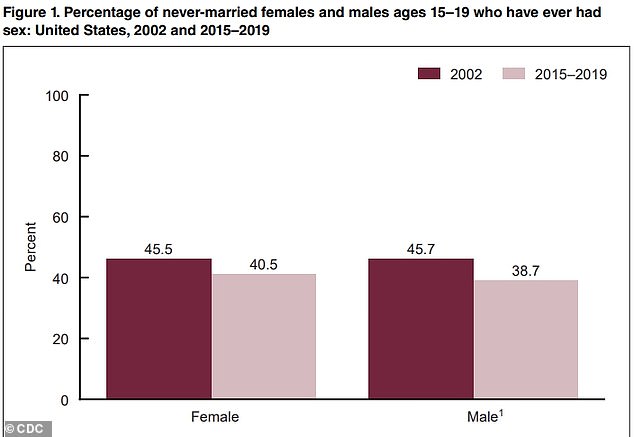
The above shows the percentage change in the number of male and female teens aged 15 to 19 who have ever had sex between 2002 and 2019

Male and female teenagers between the ages of 15 and 19 are having less sex, but they are turning more to emergency contraception to prevent unwanted pregnancies.
One explanation for the increase in morning-after pill use, despite the declining number of teens having sex, could be that the use of condoms and birth control pills has decreased.
Although overall condom use increased overall in the four years surveyed, when surveyed, female teens were less likely to report having used one in the previous three months than in 2002.
The number of women who used a condom during sex in the previous three months fell slightly from 52.5 percent in 2002 to just under 50 percent between 2015 and 2019. Among men, the decline was from 70 percent to 68 percent.
The use of contraceptive pills among girls decreased over the entire duration of the study: from 35 percent in 2002 to 30 percent in 2015-2019.
However, overall use of contraception, including emergency methods, has increased among both sexes. In 2002, 83 percent of female teens ages 15 to 19 reported using some form of contraception in the previous three months. Between 2015 and 2019, that number increased to 90 percent.
Of men, 90 percent used some form of contraception in 2002, compared to 94 percent between 2015 and 2019.
But teenage girls may have replaced their pills with other increasingly popular hormonal birth control, such as an intrauterine device (IUD) or an implant.
An IUD is a small plastic device that is inserted into the uterus and provides protection against pregnancy for three to ten years. It releases small amounts of hormones in the uterus to prevent sperm from fertilizing the eggs and is more than 99 percent effective.
A contraceptive implant is a very small rod that is inserted under the skin of a woman's arm to prevent pregnancy for up to four years. It releases small amounts of hormones to prevent the ovaries from releasing eggs and prevents sperm from reaching the eggs.
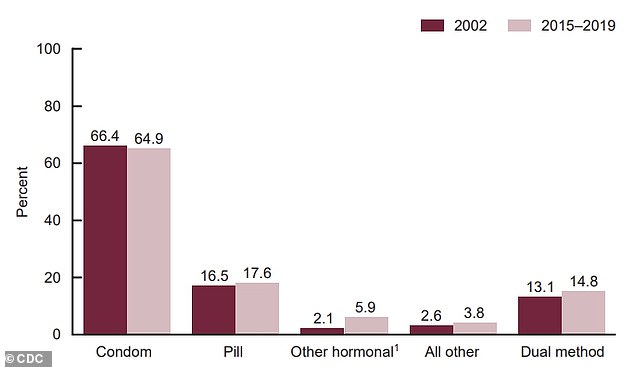
The above shows the contraceptive method used in female teenagers during their first intercourse
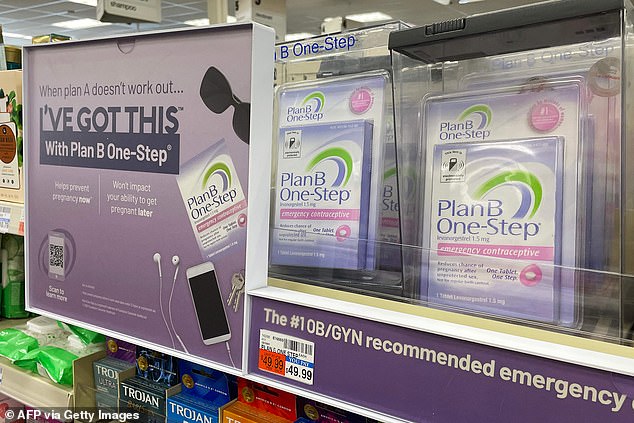
Plan B, like other levonorgestrel contraceptives, is available at drugstores and pharmacies and people do not need a prescription to obtain it. It is available without a prescription and can be purchased by anyone of any age or gender
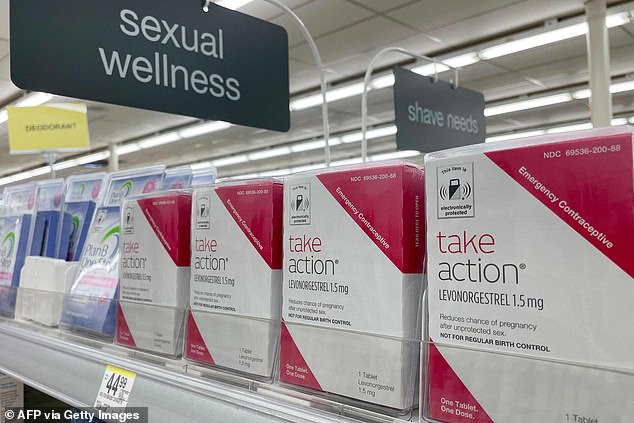
Plan B and other similar emergency medications containing the hormone can be taken up to five days after unprotected sex, but are more effective the sooner you take them
The numbers predate the reversal of Roe vs. Wade, who stripped American women of their right to abortion, which would have had a significant impact on contraceptive use.
The CDC data showed that 15- to 19-year-old girls were more upset about a hypothetical pregnancy in 2015-2019 (30 percent) than between 2011 and 2015 (28 percent).
The increase was also reflected among men, with 34 percent saying they would be upset in 2011-2015, compared to 36 percent in 2015-2019.
Emergency contraception – also called the morning-after pill – is a medication taken after sexual intercourse when no other form of contraception has been used or the method used has failed, such as breaking a condom.
The most well-known form of emergency contraception is Plan B. The pill contains the hormone levonorgestrel, which is used to prevent pregnancy by preventing a woman's egg from fully developing, delaying ovulation, or preventing the egg from attaching to the uterine wall adheres. reducing the chance that sperm will fertilize it.
Plan B and other similar emergency medications containing the hormone can be taken up to five days after unprotected sex, but are more effective the sooner you take them.
And emergency contraception that contains the hormone may not be effective if the person using it weighs more than 165 pounds.
Plan B, like other levonorgestrel contraceptives, is available at drugstores and pharmacies and people do not need a prescription to obtain it. It is available without a prescription and can be purchased by anyone of any age or gender.
Usually it comes as a single pill to be swallowed and typically costs between $40 and $50.
Side effects are uncommon but may include headaches, stomach upset, dizziness, and a change in your normal menstrual cycle.
Although emergency contraception can prevent pregnancy after unprotected sex, it does not affect a woman's ability to become pregnant at another time.
Teens aren't the only ones having less sex. A nationally representative survey in California found that in 2021 – according to the latest available data – 38 percent of people between the ages of 18 and 30 reported having had no sexual partners in the past 12 months. This represented an increase of 29 percent compared to 2019.
Although 20 percent of older adults also reported having no sexual partners in the past 12 months, this was only a slight increase from 18 percent in 2020.
Researchers have speculated about the rising cost of living after the pandemic forced younger people to live with their families longer and spend more time online, reducing opportunities to have sex.
The increasing idea of long-distance digital relationships and attitudes in favor of long-term relationships could also explain the decline in sexual activity.
But this slump in Americans' sex lives could be a driving force behind the country's declining birth rate.
U.S. births have been declining for years, falling 22 percent nationally since 2007, data show — and the downward trend has led to warnings that the U.S. is now on an irreversible path of economic decline.
In 2007, the national birth rate was 14.3 births per 1,000 inhabitants. According to the most recent data, this had fallen to just 11.1 per 1,000 people by 2022.
With the declining birth rate and rising number of aging people in the U.S., economists fear that Americans will see a rise in taxes to cover programs for the elderly like Social Security and Medicare, which would lead to less disposable income to stimulate spending.

